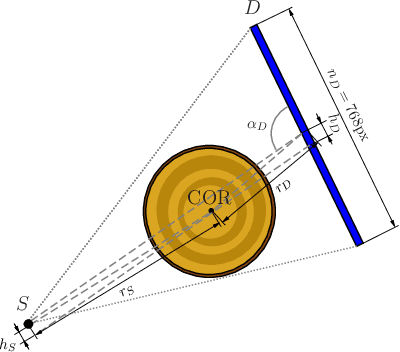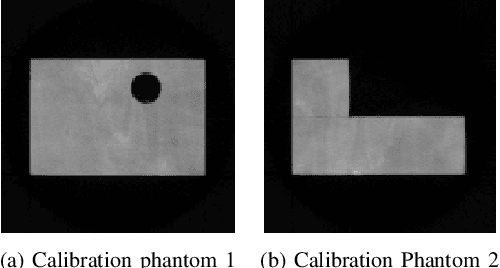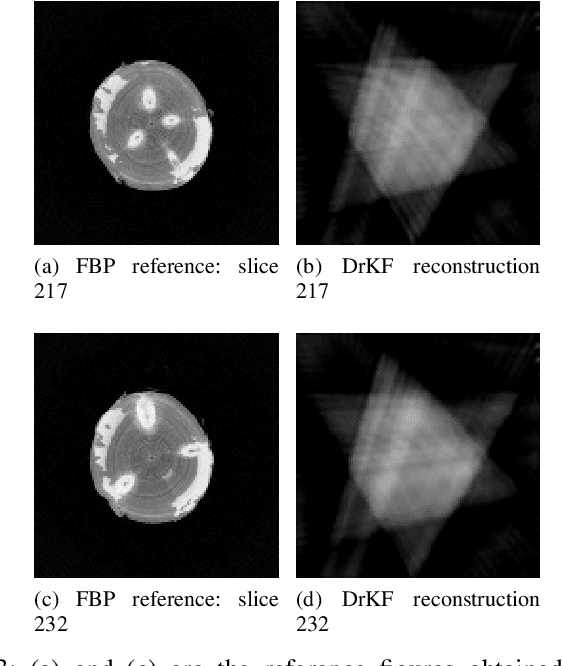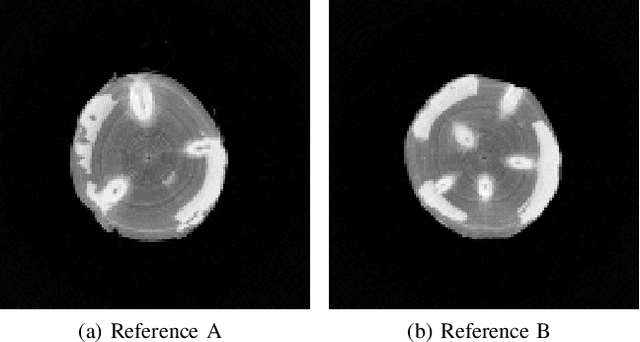Tomi Kauppi
Multimodal surface defect detection from wooden logs for sawing optimization
Mar 27, 2025Abstract:We propose a novel, good-quality, and less demanding method for detecting knots on the surface of wooden logs using multimodal data fusion. Knots are a primary factor affecting the quality of sawn timber, making their detection fundamental to any timber grading or cutting optimization system. While X-ray computed tomography provides accurate knot locations and internal structures, it is often too slow or expensive for practical use. An attractive alternative is to use fast and cost-effective log surface measurements, such as laser scanners or RGB cameras, to detect surface knots and estimate the internal structure of wood. However, due to the small size of knots and noise caused by factors, such as bark and other natural variations, detection accuracy often remains low when only one measurement modality is used. In this paper, we demonstrate that by using a data fusion pipeline consisting of separate streams for RGB and point cloud data, combined by a late fusion module, higher knot detection accuracy can be achieved compared to using either modality alone. We further propose a simple yet efficient sawing angle optimization method that utilizes surface knot detections and cross-correlation to minimize the amount of unwanted arris knots, demonstrating its benefits over randomized sawing angles.
Towards synthetic generation of realistic wooden logs
Mar 18, 2025Abstract:In this work, we propose a novel method to synthetically generate realistic 3D representations of wooden logs. Efficient sawmilling heavily relies on accurate measurement of logs and the distribution of knots inside them. Computed Tomography (CT) can be used to obtain accurate information about the knots but is often not feasible in a sawmill environment. A promising alternative is to utilize surface measurements and machine learning techniques to predict the inner structure of the logs. However, obtaining enough training data remains a challenge. We focus mainly on two aspects of log generation: the modeling of knot growth inside the tree, and the realistic synthesis of the surface including the regions, where the knots reach the surface. This results in the first log synthesis approach capable of generating both the internal knot and external surface structures of wood. We demonstrate that the proposed mathematical log model accurately fits to real data obtained from CT scans and enables the generation of realistic logs.
Deep Unsupervised Segmentation of Log Point Clouds
Mar 18, 2025Abstract:In sawmills, it is essential to accurately measure the raw material, i.e. wooden logs, to optimise the sawing process. Earlier studies have shown that accurate predictions of the inner structure of the logs can be obtained using just surface point clouds produced by a laser scanner. This provides a cost-efficient and fast alternative to the X-ray CT-based measurement devices. The essential steps in analysing log point clouds is segmentation, as it forms the basis for finding the fine surface details that provide the cues about the inner structure of the log. We propose a novel Point Transformer-based point cloud segmentation technique that learns to find the points belonging to the log surface in unsupervised manner. This is obtained using a loss function that utilises the geometrical properties of a cylinder while taking into account the shape variation common in timber logs. We demonstrate the accuracy of the method on wooden logs, but the approach could be utilised also on other cylindrical objects.
Reconstruction and segmentation from sparse sequential X-ray measurements of wood logs
Jun 20, 2022



Abstract:In industrial applications it is common to scan objects on a moving conveyor belt. If slice-wise 2D computed tomography (CT) measurements of the moving object are obtained we call it a sequential scanning geometry. In this case, each slice on its own does not carry sufficient information to reconstruct a useful tomographic image. Thus, here we propose the use of a Dimension reduced Kalman Filter to accumulate information between slices and allow for sufficiently accurate reconstructions for further assessment of the object. Additionally, we propose to use an unsupervised clustering approach known as Density Peak Advanced, to perform a segmentation and spot density anomalies in the internal structure of the reconstructed objects. We evaluate the method in a proof of concept study for the application of wood log scanning for the industrial sawing process, where the goal is to spot anomalies within the wood log to allow for optimal sawing patterns. Reconstruction and segmentation quality is evaluated from experimental measurement data for various scenarios of severely undersampled X-measurements. Results show clearly that an improvement of reconstruction quality can be obtained by employing the Dimension reduced Kalman Filter allowing to robustly obtain the segmented logs.
 Add to Chrome
Add to Chrome Add to Firefox
Add to Firefox Add to Edge
Add to Edge